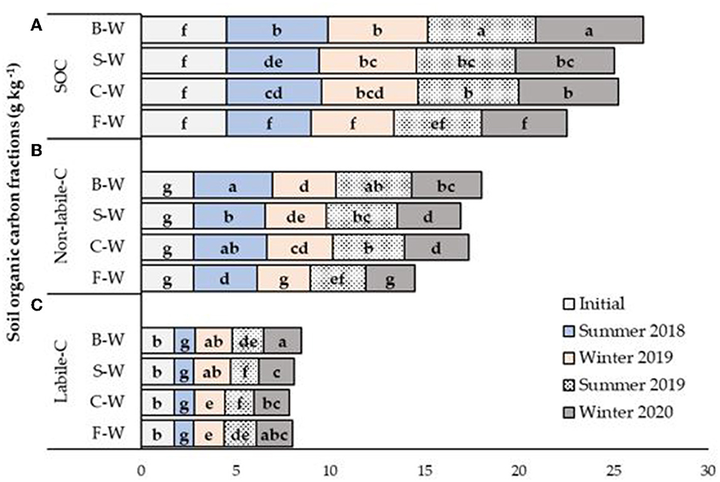Cropping systems and agricultural management strategies affect soil organic carbon dynamics in semi-arid regions

Abstract
In this study, we investigated the response of SOC and its fractions to various combination of agricultural management practices based on measurements obtained from an experiment conducted over four growing seasons from 2018 to 2020 in Ahvaz, Iran. The experimental treatments involved three agricultural strategies combined with four crop rotation systems. The agricultural strategies comprised conventional (CON: mineral fertilizer, removal of all crop residues), organic (ORG: organic fertilizer, 30% return of crop residues to the soil), and integrated (INT: mineral/organic fertilizer, 15% return of crop residues) strategies. The crop rotation systems were: fallow-wheat (F-W), corn-wheat (C-W), sesame-wheat (S-W), and mung bean-wheat (B-W). Soil samples were collected from all treatments and SOC, labile-C, and non-labile-C were measured.After two years of experiment, no significant improvement was found in SOC of CON strategy (p ≤ 0.05). The ORG and INT strategies contained on average 1.1 and 1.06 times more SOC than the CON strategy, respectively. The value of labile-C was decreased during summer cultivations and increased in the soil samples collected after winter cultivations. However, although the quantity of labile-C in ORG (2 g kg−1) was higher than INT (1.83 g kg−1) and CON (1.87 g kg−1) overall during the experiment time, after the second summer cultivation despite the gradual accumulation of organic matter due to high levels of temperature and humidity, the content in ORG reduced to1.47 g kg−1. In all three agricultural management strategies, the SOC content in the four rotation systems was according to the following descending order B-W (5.7 g kg−1) > C-W (5.29 g kg−1) > S-W (5.23 g kg−1) > F-W (4.52 g kg−1). Therefore, for this region M-W and S-W crop rotation systems are recommended in addition to C-W (which is the most common rotation system). However, crop rotation systems were more beneficial for C-sequestration when combined with organic and inorganic fertilization and crop residue incorporation. This study gives promising results for implementing INT and ORG strategies under long-term cropping systems containing various summer crops in rotation with wheat for improving SOC dynamics in semi-arid regions in Iran